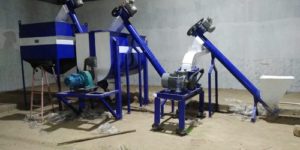Sandbags have long been a reliable tool for flood control, erosion prevention and various construction projects. When handling large quantities of sandbags, ensuring proper storage and handling is essential to guarantee their effectiveness during emergencies. Whether you are getting ready for flood situations or using sandbags for construction, adhering to these guidelines will assist you in preserving the sandbags’ integrity and maximizing their performance.
Quality Matters: Start with the Right Sandbags
Before delving into storage and handling, it’s essential to begin with quality sandbags. Choose bags made from durable materials that can withstand environmental elements. Woven polypropylene is a common and robust choice, providing resistance to tearing and UV degradation. Ensure the stitching and seams are strong, as weak points can compromise the overall effectiveness of the sandbag. Choosing the right supplier can make all the difference in ensuring the durability and reliability of your sandbags. St. Boniface Bag Co stands out as a trusted wholesaler and you’re able to shop online through their website to source sandbags, burlap bags, firewood bags and more.
Storage Location: Keep It Dry and Elevated
One of the primary enemies of sandbags is moisture and when stored in damp conditions sandbags can develop mold making them less effective when needed. Therefore, it’s crucial to store sandbags in a dry location, preferably elevated above the ground to prevent contact with moisture so consider using pallets or platforms to keep the sandbags off the ground, reducing the risk of water damage.
Regular Inspections: Check for Wear and Tear
Frequent inspections are a key aspect of proper sandbag management. Regularly assess the condition of the bags for any signs of wear and tear, such as frayed seams or holes. Damaged sandbags should be replaced immediately to maintain the overall integrity of your sandbag stockpile. Implement a schedule for routine inspections to catch any issues before they escalate.
Proper Filling Techniques: Optimize Sandbag Performance
When filling sandbags, it’s crucial to use the correct techniques to ensure optimal performance. Overfilled bags may not stack properly, while underfilled bags might not provide adequate protection. Aim for a consistent fill level and avoid compacting the sand too tightly. Additionally, ensure that the bags are securely tied to prevent spillage and maintain a uniform shape for efficient stacking.
Secure Storage: Protect Against Wind and Animals
Wind and animals can pose additional threats to sandbag integrity. Wind can displace them, rendering them less effective during flooding or erosion events. Meanwhile, animals may be attracted to the sand, potentially causing damage to the bags. To mitigate these risks, secure the sandbags in a designated storage area using sandbag barriers or other protective measures. Implementing these safeguards is crucial for preserving the structural integrity of the sandbags over time.
Labeling and Organization: Streamline Accessibility
Maintain a well-organized storage system by labeling sandbags with relevant information, such as the fill date and type of sand used. This ensures that older bags are used first, preventing the possibility of sand settling and affecting the bags’ performance. Proper organization also streamlines accessibility, allowing for quick deployment during emergencies.
Temperature Considerations: Avoid Extreme Conditions
Extreme temperatures can impact the longevity of sandbags as exposure to prolonged periods of intense sunlight can weaken the material while extremely cold conditions may make the bags more brittle. Store sandbags in a climate-controlled environment when possible and if exposure to extreme temperatures is unavoidable, monitor the bags closely for signs of degradation.
Training and Education: Equip Personnel with Knowledge
For effective handling and deployment during emergencies, it’s essential to educate personnel on proper sandbag procedures. Conduct training sessions to familiarize individuals with the correct filling techniques, stacking methods and safety protocols. Well-informed personnel are better equipped to respond efficiently when the need arises.
Conclusion
The proper storage and handling of sandbags in bulk are paramount for their effectiveness in flood control, erosion prevention and construction projects. By starting with quality bags, maintaining a dry and secure storage location, conducting regular inspections, optimizing filling techniques and implementing proper organization and labeling, you can ensure that your sandbags are ready for action when needed. Remember that the effectiveness of sandbags relies not only on their initial quality but also on ongoing maintenance and a commitment to best practices in storage and handling.







